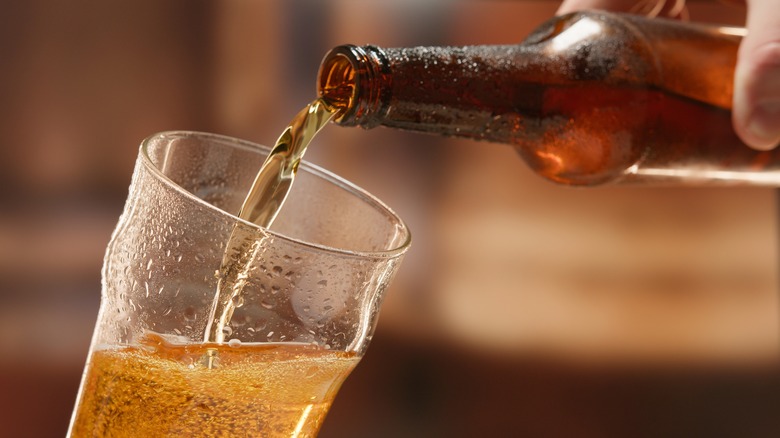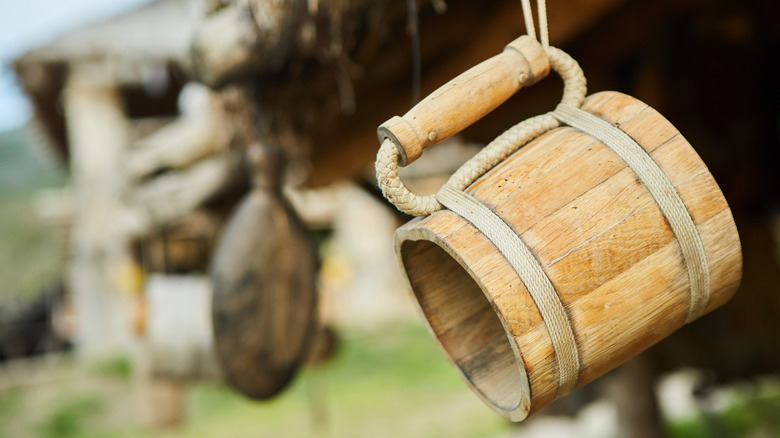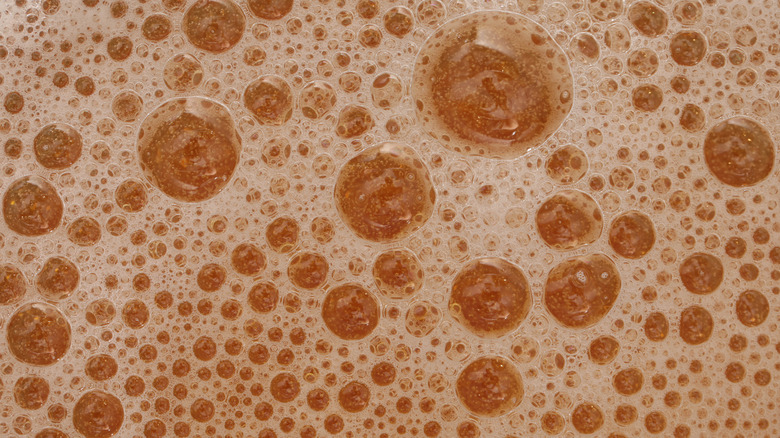The Science Behind The Bubbles In Your Beer
A glass of "bubbly" might refer to champagne, but there are bubbles in plenty of other alcoholic beverages, too. In fact, other drinks might be even more bubbly than champagne, including beer. According to Live Science, beer actually produces about twice as many bubbles per glass than champagne: some 2 million per half pint, compared to 1 million in each flute of champagne.
This fact might seem strange, because we don't tend to think of beer as very carbonated. But the fermented drink is filled with bubbles in both the thick foam on the top of the glass as well as bubbling up throughout the pint as you sip it. This is a result of the chemical reactions that occur in beer to make it alcoholic: Yeast ferments with sugar and produces alcohol, along with CO2 (via Vine Pair). This CO2, trapped in the beer, bubbles out when you take a drink.
History of beer
Beer isn't just a popular drink; it's also very old. Dating back perhaps as many as 13,000 years, according to Live Science, beer probably originated in Sumerian Mesopotamia, World History reports. From there, it spread to Egypt. This beer wasn't quite like the modern day drink: it was thick, made from dough fermented in pots.
Beer never really caught on in much of the Mediterranean, where wine was favored, but Germans loved beer and developed it into its modern form starting around 800 B.C., according to World History. Today, beer is a popular drink across much of the world. In fact, it's the most popular alcoholic beverage on the planet, according to Live Science.
Bubbles are an essential part of this popularity, since they lend beer much of its tangy flavor (via Science Daily). That's because they affect the mouthfeel and aroma of beer, according to Massive Science, making fresh lager much tastier than the flat stuff.
Why there are bubbles in beer
Beer is made out of malted cereal grains, hops, yeast, and water, according to Live Science. When these ingredients ferment, CO2 is created as part of the chemical reaction. Much of that CO2 stays trapped within the beer, and bubbles out when you drink it. But there's another source of CO2 in your drink, too. When beer is sealed in cans, it's pressurized. This adds more CO2 to the beer. As a result, the beer contains a lot of carbonation by the time it's consumed.
The size and shape of your beer glass affects how the bubbles are released, according to Live Science. CO2 gathers in divots and imperfections in the glass, creating bubbles that attract more CO2 as they rise throughout your drink, growing in size, per Stanford University. That means the type of glass you use really does affect what your beer-drinking experience is like.
Unlike bubbles in champagne, these don't pop when they reach the surface of the beer. Instead, glycoproteins in beer reduce the surface tension and allow the bubbles to adhere to each other better, according to Vine Pair. That's why a head of foam develops on beer, while champagne stays smooth on top. Clearly, beer can be a pretty air-heavy drink, so next time you catch yourself burping after you down a bottle or more, you'll know the science behind it.


